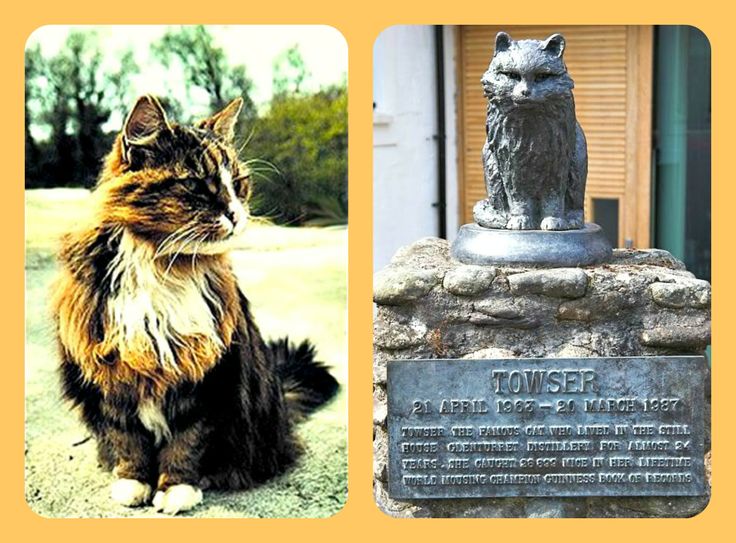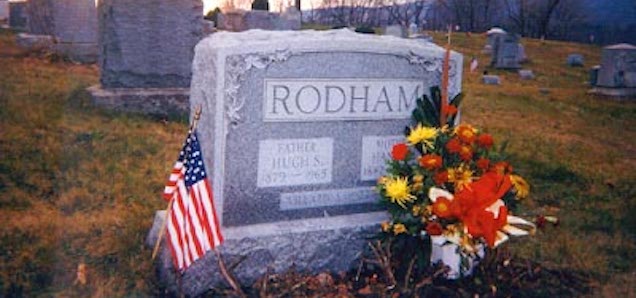Caleb Wilde
(218 comments, 980 posts)
Posts by Caleb Wilde
Where were you when you heard the news?
Were you driving?
Cell phone rings
Kids in tow
Tears flowing
“Mom, what’s wrong?”
Did you pull over?
Did you tell them?
Or did you not?
“Nothing, honey.
Moms just crying.”
Or
“Mom-mom just called.
Pop-Pop died.”
*****
Were you at work?
“This isn’t good.
You thought to yourself
“Dad never calls me at work.”
It goes to voicemail.
“Call me ASAP”
Dad says.
Voice shaking.
You go to the bathroom
Return the call
Lock the doors.
“It’s your mom . . . .”
*****
Was it in on your couch?
Searching your Facebook newsfeed
You see it.
“It’s a joke”
She can’t be . . .
You text your best friend
No response
It’s not a joke.
Oh, God. Oh, God.
*****
Was it late at night?
2:00 am
Someone knocks on the door
The dog starts barking.
Everybody’s home.
So you thought.
“Are you the father of . . .”
“Yes”, you tell the officer.
“I regret to inform you . . .”
*****
Perhaps you were there
The moment
The hysteria
When eyes lost life
You will never forget
That time, place
Where color faded to gray
When clarity became confusion
When life ended suddenly
And a part of you with it.
The Most Murderous Cat EVER
Glenturret Distillery claims to be the oldest distillery in Scotland, but that fact may not be their ultimate claim to fame … at least from my perspective.
Via wikipedia:
Towser, a long-haired tortoiseshell female, the resident feline pest control expert at Glenturret from 1963 till 1987 [25] was an officially recognised record breaker. Her record breaking victim count was estimated as 28,899[26] mice, which were laid out on the Still House floor each morning to be inspected by the stillman. The auditors for the Guinness book of records observed Towser’s prowess over a number of days and her total kill count was estimated statistically. She was commemorated by a bronze statue at the visitor’s centre at Glenturret and her story was featured on Blue Peter. Her paw prints also decorate the label on a bottle of Fairlie’s light Highland Liqueur. [27] Her successors are Dylan and Brooke [28] who were chosen for their friendliness and photogenic looks rather than for their mousing skills.
The Tombstone of Hillary Clinton’s Father Vandalized
The political vitriol that surrounds US Presidential campaigns started off at rock bottom this past week.
Hillary Clinton announced her Presidential candidacy on Sunday and sometime on Monday the tombstone of her father was pushed over in the small Scranton, Pa. cemetery where he is buried.
Let’s be clear: any heinous action that is done against something that is defenseless is a clear act of cowardice.
An action that is done out of political protest to something defenseless, such as a grave, is an act of equal parts cowardice, irreverence and witlessness.
Actions like this don’t serve democracy. They provoke rage, cloud judgment and sow distrust … all of which work against intelligent discourse, solid conversation and healthy tolerance.
I don’t care how much you dislike Hillary as a person and how much you dislike her political persuasions, the desecration of a grave is simply one of the lowest acts known to humanity. Acts like this say nothing of protest, but only blind hatred.
Let’s hope the 2016 Presidential race can have more intelligent conversation than less cowardly desecration.
Scientist Confirms “Old People Smell”

© 2009 Ulrich Joho, Flickr | CC-BY-SA | via Wylio
We’ve all smelled it. And like flatulence in church, nobody says anything.
It’s that odd perfume that comes from Great Grandma Eunice when you reach down to give her a hug.
It’s that odor that wafts through nursing homes.
And now science is here to prove to us what we’ve already known.
Older people have an odd odor that is all their own.
In fact, notes Johan Lundström, Ph.D., the lead author of the study, the smell of older people is a universal smell that can be identified from Asia to Alaska.
There’s even a word for this smell in Japan: kareishū.
Here’s the explanation for “the smell” from Dr. Lundström:
The root cause of the old person smell is still a mystery, but the study notes that long-term changes to the skin glands may be involved. Lundström suspects it also may be related to an accelerated rate of cell decay. “As cells die at a faster pace, they might give off a different odor that is unique to people with old age,” he says. (from CNN.com)
*****
As a funeral director, I know the small all too well as I frequent nursing homes more often that some of the occupant’s family. It’s a smell that has always elicited sadness in me. Sadness for those who sit in waiting, often unvisited by outsiders.
I’ve read before that babies have a certain smell that neurologically encourages attachment in adults. We can actually love our infants more just by smelling them.
So, what does the “old people smell” encourage? For me, it’s encouraged a sense of the holy … a sense of both respect and a degree of otherness. An otherness that’s been created by a recognition of life and death. An otherness that we can learn from.
Next time you smell the “old people smell”, maybe we should just sit and listen (not necessarily to their words) to the holy that’s apart of the end stage of life.
Six Good Things About Embalming and Restoration

© 2009 Nathan Jongewaard, Flickr | CC-BY | via Wylio
Morticians have been taught that embalming is the foundation of the funeral business. That without embalming … we’d be buried. During the modernization of America and at the beginning of the “American way of death”, embalming was the foundation. But we no longer exist in a modern paradigm, we exist in plurality and fragmentation with “American ways (!) of death”.
I don’t think the funeral profession’s survival depends on embalming nor do I think embalming is the pinnacle of a good funeral. England, Canada and Australia are examples of industries that exist without the centrality of embalming. And it would be very neocolonialist of us to assume that our way of embalming represents the best and only way for healthy funeralization.
Despite this preface, I do believe embalming and restoration is valuable. Here’s some short history of the practice as well as some possible benefits of embalming and restoration that I’ve observed.
One. Children.
The fact that my wife and I are infertile has — for some reason — made me extra sensitive to the sight of dead children … or at least that’s the reason I give for the sickness I feel when seeing a child’s corpse.
He was three years old. An all too young victim of cancer. I returned from the Children’s Hospital with his withered corpse and found my grandfather — dressed in his embalming gear — awaiting me in the morgue. That day we had a couple death calls and I had other work to do, so I left my grandfather alone to embalm this young body that had been emaciated by the cancer and the chemo. In fact, I didn’t even offer to assist my grandfather because I knew the embalming experience would put me in a horrible mood for the rest of the week.
Two hours later I stuck my head in the morgue to peak at my grandfather’s results. And what I saw was nothing like the boy I had brought back from the hospital. His skin, which had been a greenish tone, was now a healthy looking flesh tone. All the indentations on his face from the breathing machines, all the tube and machine imprints that had marked his body had been worked out by my grandfather’s expert work. Even the boy’s weight looked more natural, as the embalming filled out the weight the cancer had taken.
Two. Accidents, Cancer Emaciation and Tragedies.
For the most part, we’re able to restore various degrees of accidents, cancer emaciation and tragedies. It helps. It helps to see your loved one in a restored state.
Three. It helps make the symbol of death look pretty.
Dr. Erich Lindemann (grief management pioneer) says that a defining characteristic of persons dealing with complicated bereavement is that they never saw the dead body of their loved one. Although his observation isn’t based on any clinical studies, I think most funeral directors have recognized the weight of Dr. Lindemann’s statement.
An embalmed body helps the symbol look good. There’s nothing wrong with that. It’s a good thing. In fact, at times it’s a beautiful thing.
Certainly, embalming isn’t necessary AT ALL to see the dead body. But, it can help.
Four. War.
The emphasis on embalming the corpse for aesthetic purposes finds its popular beginning in the American Civil War. As a humane token to the grieving families of soldiers who were killed in action, an attempt was made by the armies to return the bodies home for proper burial. To avoid the cruelty of shipping home (often by train) a decomposing body, “field embalmers”, comprised of civilian physicians and some undertakers, began offering families the option of having their sons embalmed. Those that had the “bodies of their relatives returned from the war theaters … could give testimony to the effectiveness and desirability of the chemical embalming by injection” (Habenstein and Lamers 1955: 336).
While refrigeration, etc. can keep persons KIA from decomposing, embalming and restoration can allow the family to see their son or daughter in a restored condition one last time. In some circumstances, this makes embalming invaluable.
Five. When the Body Has to Wait …
On the other side of the coin, maybe there’s a person deployed in the foreign field. Or maybe one of the deceased’s sons lives in China. And the quickest they can get home is in three weeks … and they feel they MUST see the deceased. It’s possible to keep the deceased in refrigeration for three weeks unembalmed, but with a three weeks wait, embalming would be the much preferable option in this case.
Six. Sometimes DIY Isn’t the Best
There’s a lot of “death hacks” and DIY options that all but eliminate the need for a funeral director. But, this doesn’t mean funeral directors are outdated and unneeded. Like taxes, wedding planning, buying a house or even giving birth, there’s a range of symbiotic DIY options and professional involvement. While it’s usually possible to have a DIY funeral, funeral directors are beneficial during the death process.
And while it’s possible for a family to prepare a body for a home funeral, it’s not something everyone wants or can do. We’re here, if you want us. Some of us are VERY good at embalming and restoration and can help your loved look more like the person you remembered in life.



